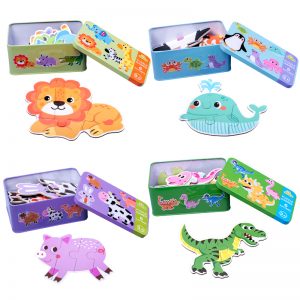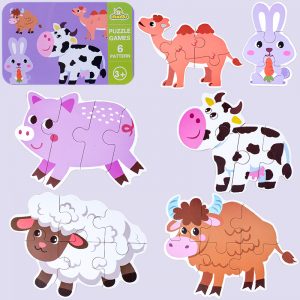What are the skills of puzzles?
We regard the space as the number 9, and look at the picture a in the normal order. 9 is 123456789, and its reverse number is 0, which is an even arrangement; picture b is 123456879, and the reverse number is 1, which is an odd arrangement. We know that we can move only 9, and the movement here is equivalent to a special swap. Now suppose that from picture b to picture a after a series of translations, the space block 9 must move (swap) an even number of times (one time to the left must go back to the right again, and one time up to go down and back again), According to the above theorem, the final arrangement must be an odd arrangement (same as picture b). However, picture a is an even arrangement, which creates a contradiction. Therefore, picture b cannot be transformed into the final picture a by shifting the space block.
Considering further, picture a can be translated into some other states. We classify these into one category, and picture b also represents one category. Now we have to ask “how many types of puzzles are there?”, the answer is a puzzle greater than or equal to 2*2 There are and only these 2 categories. Only the proof idea is introduced here:
1. According to the above theorem, all puzzles are divided into at least two categories
2. There are only two types of 2*2 puzzles
3. After the puzzle is enlarged, the number of categories does not increase.
According to these three items, it can be concluded that there are and only two types of puzzles. We can get some other interesting results. The difference between the two types of puzzles is the odd number of swaps between them. That is to say, if a non-empty piece of the puzzle is exchanged an odd number of times, it will change to the other category.
The essential reason for is divided into two types is because the plane has two faces, just like clockwise and counterclockwise.
variant
The pictures of puzzles are mostly based on natural scenery, buildings and some familiar patterns. Castles and mountains are two types of traditional themes, but any pictures and videos can be used as materials for puzzles. Some companies also provide services for turning private photographic works into puzzles.
Common plane puzzles have different specifications such as 300 pieces, 500 pieces, 750 pieces, 1,000 pieces, etc.; currently, the largest size product puzzle is 24,000 pieces/set. The mainstream layout of the puzzle, a thousand pieces/set is 38×27, a total of 1,026 pieces; 500 pieces/set is 27×19, a total of 513 pieces. The size and number of pieces of children’s puzzles are even more varied.
There are also some types of puzzles that have patterns printed on both sides of the pieces. Players can use the patterns on any side to form a group. At the same time, the difficulty of the game is also increased because it is difficult for the player to determine which side is the piece in hand. On the right side.
In addition to the traditional three-dimensional puzzle types of flat puzzles. The pieces are mostly made of more solid materials such as wood or foam. Its spatial characteristics often lead to an increase in difficulty, requiring players to splice the pieces in a specific order: if there are pieces in the completed part that are improperly assembled, the remaining pieces may not be able to continue to be spliced up. Another type of toy called “puzzle box” is also very common: players can use interlocking parts similar to flat puzzle pieces to assemble small drawers or boxes that can store items in the middle.
can be regarded as an intermediate type between the plane puzzle and the three-dimensional puzzle. Similar to a plane puzzle, its spherical surface is also a single-layer structure made of cardboard pieces; and its final shape is a three-dimensional shape with the attributes of length, width, and height. In addition, there are some software that can simulate physical puzzles in computer graphics. The advantage of this virtual puzzle is that it does not require manual cleaning and there is no risk of missing pieces. Among them, abnormal puzzles or puzzles with famous animated characters are more popular.
















